Create an Ombré Quilt with Fat Quarters
In a previous post we created an ombré Triangle Jitters quilt by combining the required yardage from the pattern into 8 fat quarters. With that quilt we used some fabulous ombré fabric by V and Co. This time around, however, I’ll be using solid fabric fat quarters to create an ombré quilt. It may take a bit more brain power, and a swatch card is certainly helpful, but I think we can do it.
Turn a Pattern Into An Ombré Quilt Step #1: Fabric Requirements
These steps can apply to a lot of different quilt patterns, but in this post I’ll be talking specifically about the Nordic Triangles pattern. Step #1 in this process is to convert our fabric into fat quarters. To make the throw size (54" x 72"), the fabric requirements look a little something like this:
- Color 1: ½ yd.
- Color 2: 1 ¼ yd.
- Color 3: ¾ yd.
- Color 4: ¾ yd.
- Background: 2 ¾ yd.
Just like we did with the ombré Triangle Jitters quilt, let’s mash together Colors 1-4, but leave the Background fabric as is. You could mash it all together if you want more of a flowy watercolor look. In fact, if you ombréd two colorways together, one being the “Colors” and one being the Background, and had them meet in the middle that would look amaaazing.
I’m getting off track. But you should totally do that. OK, back to business.
The Nordic Triangles pattern is made with only half square triangles. This wonderful and basic block is simply a square sliced in half on the diagonal, forming two 90-degree triangles. (Thus its name, the half square triangle.)
Trending patterns!
So even though Colors 1-4 mashed together equals 3 ¼ yd. because they are taken from different cuts of yardage, we know that if there’s just one color and a background fabric, then they will be exactly the same. In this case, that’s 2 ¾ yd.
TIP! If you love two-color quilts, you now know that all you need is 2 ¾ yd. of two different fabrics to make the Nordic Triangles quilt.
Step #2: Convert Those Requirements to Fat Quarters
A very general rule of thumb is that one yard of fabric can be converted into four fat quarters. Is this always the case? No. Unfortunately every pattern needs different things based on the cutting instructions and a tiny bit of math is involved. (Don’t hate me. I’m just the messenger.)
The Nordic Triangles pattern is made from cutting 10 ¾" squares and using the 8-at-a-time HST method. When I made this quilt, I wanted to make it fast, so I threw accuracy out the window and cut my squares 11" – this gave me a bit more wiggle room for errors. I also, however, had to trim the blocks down to size. You can cut your blocks either way based on your affinity for accuracy and trimming.
Here’s where the math comes in – if I need 25 - 11" squares, how many fat quarters do I need to buy? Are you having algebra flashbacks?
I’m a visual person, so to figure this out, I like to draw a fat quarter (18" x 21") on my computer and then see how an 11" square fits. (You can also use grid paper.)
Oh dear. It looks like this is a terrible use of a fat quarter. After seeing this, I need to make a decision:
- Scrap the ombré quilt idea completely.
- Use bigger cuts of fabric. Probably ½ yd. pieces.
- Change the way I cut half square triangles so I can fit more in the fat quarter.
Ding! Ding! Ding! We’ve got a winner, folks! It’s number 3!
Half Square Triangles are AWESOME for this type of ombré quilt conversion because there are three different ways to make them. Just because the pattern is written for the 8-at-a-time method doesn’t mean I can’t switch to the 4-at-a-time method. Both roads lead to the same place – a perfect HST!
Check out this Easy Half Square Triangle Tutorial with Video!
Step #3: Make a Cutting Change and We’re Off!
After consulting my handy dandy HST conversion blog post I know that I can cut 8" (I’m rounding up) squares and also get the same finished HST size from the pattern. With this new way of cutting I can get 4 - 8" squares from each fat quarter.
Back to that math. Previously we needed to cut 25 squares to have enough HSTs for the Nordic Triangles pattern, however that was when each square gave us 8 HSTs. Now that each square will only yield 4 HSTs, 25 squares needs to double to 50 squares. Still with me?
To figure out how many fat quarters to buy, there's only one more math question left. What is 50 divided by 4?
Did your brain just go silent?
It’s OK, I’ll do the math for you. The answer is 13 with a couple squares left over.
Below is a picture of chain piecing quilt rows. Check out the full tutorial with video!
Make an Ombré Nordic Triangles Quilt Recap
Here’s the skinny in case you’d rather skim:
- Use the 4-at-a-time HST method.
- Get 13 fat quarters + Background fabric
I guess the last 800 words could have been condensed into those two bullet points. Huh. But aren't you glad you read it all? I really made you work for those two bullet points so now the payoff is even greater. Right??
Step #4: Pick Fabrics to Make an Ombré Quilt
An ombré is a gradual stair stepping of colors that has a similar effect of a watercolor fading from one hue to another. It’s a beautiful look! With the plethora of fabrics available to us, an ombré quilt is also a very achievable look.
For a simple ombré, pick two colors on the color wheel. These two colors will be your bookends. Now just fill in the gaps! With the Nordic Triangles ombré quilt I started with a light cool pink and ended with dark warm blue.
In the middle of the quilt my stair steps made a jump from the purple pinks to the light blues. I could have found different fabrics to make that transition flow better, but I really liked the mirror effect it gave the quilt since this design is symmetrical.
My Ombré Quilt Fabrics
All of my fabrics are Michael Miller Cotton Couture. These are some of the softest solid quilting fabrics on the market and they have a beautiful sheen. The background is Cream.
Have you made an ombré quilt? Do you have a favorite fabric line or any tips on picking colors? Share with us in the comments!
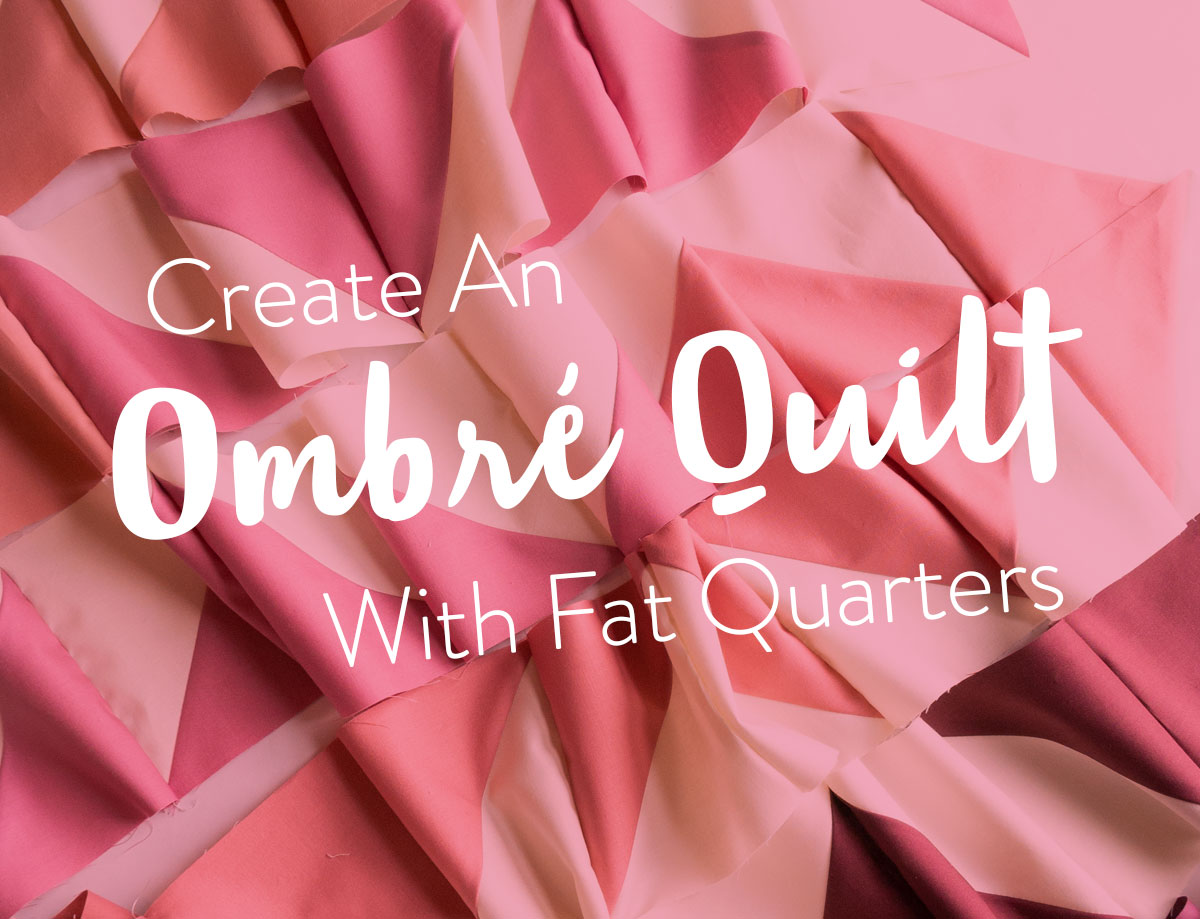
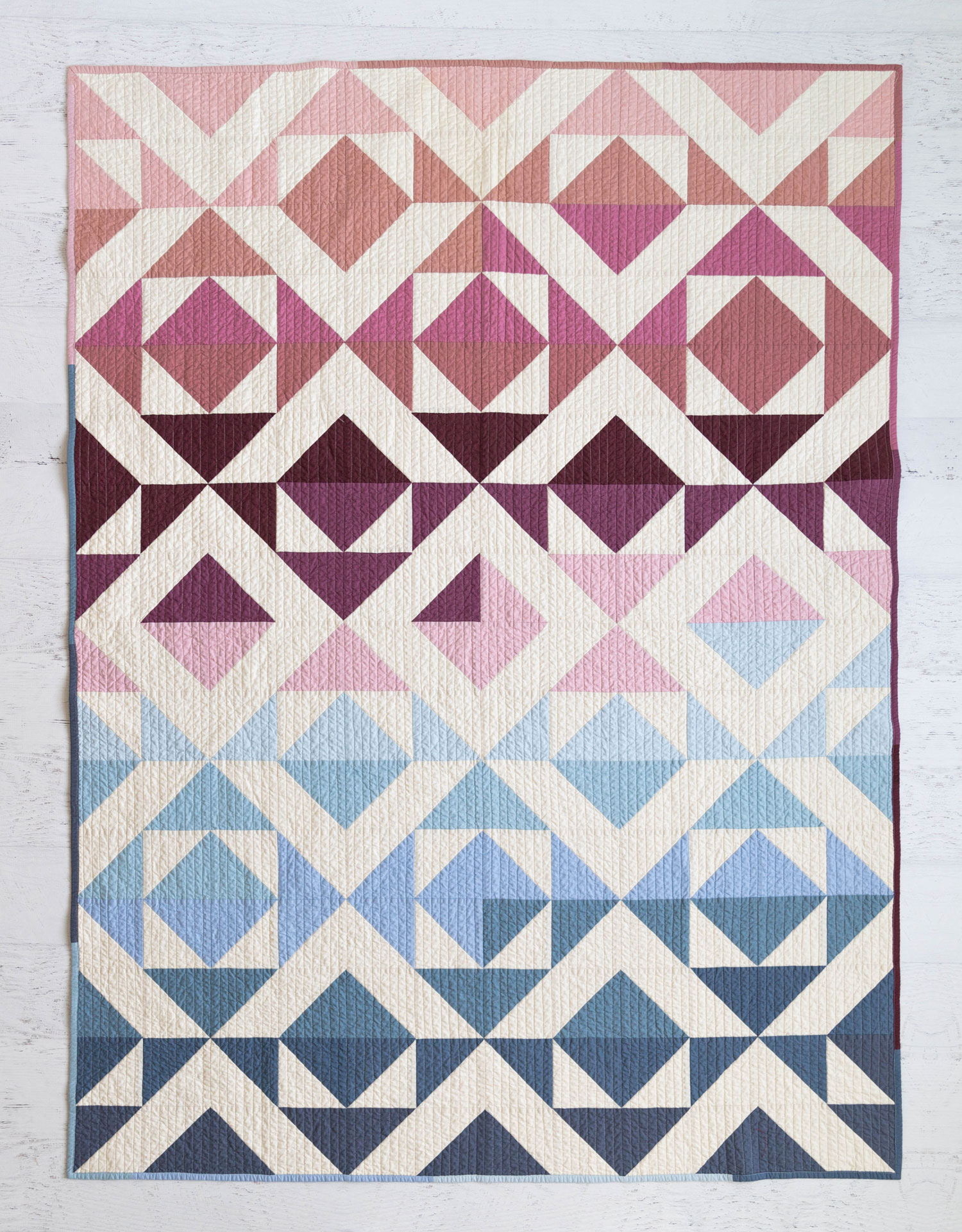
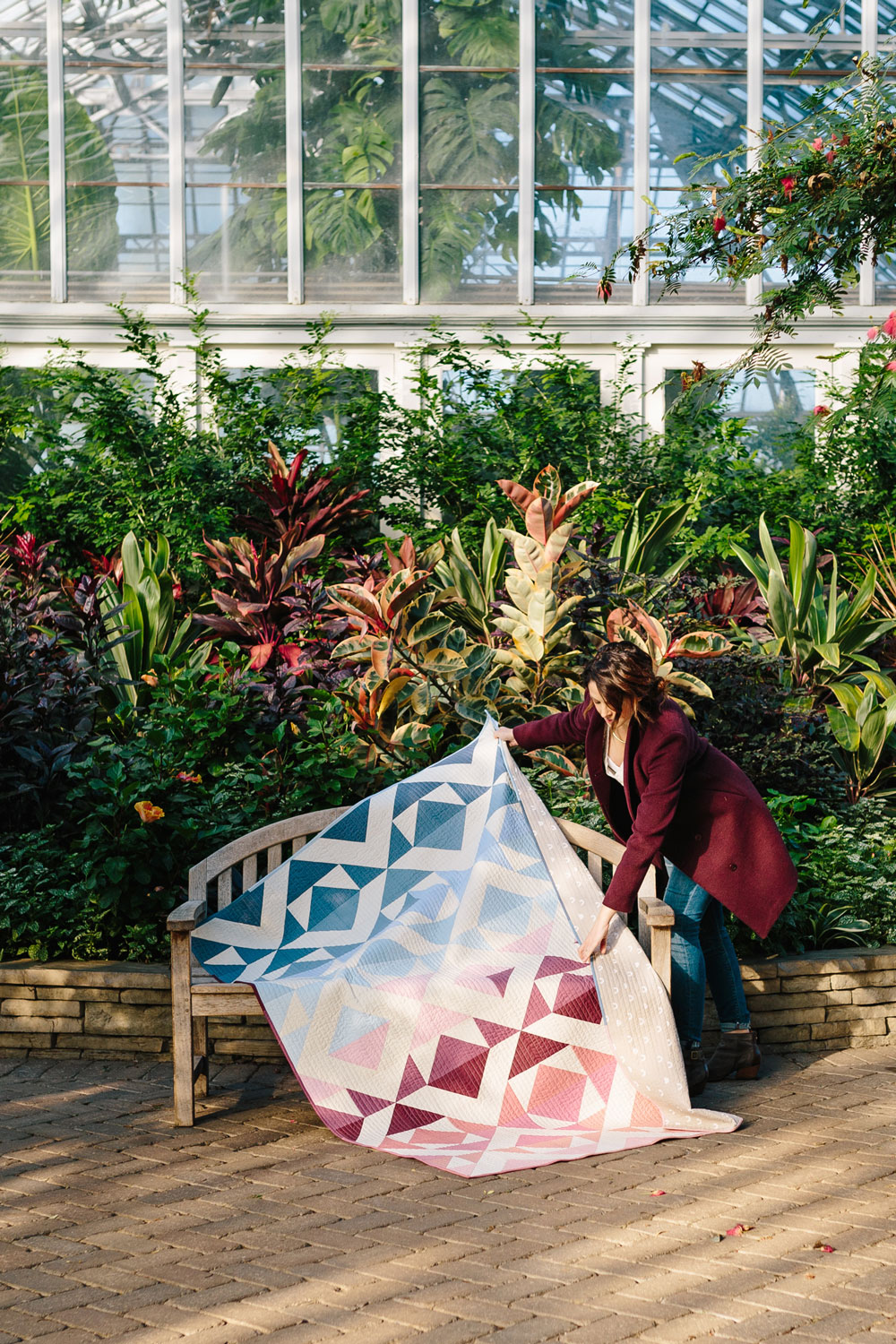
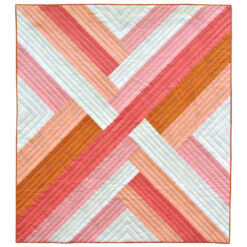
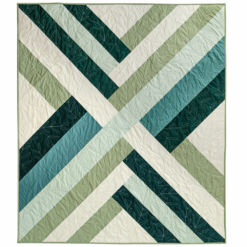
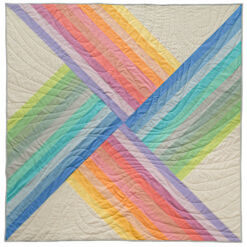
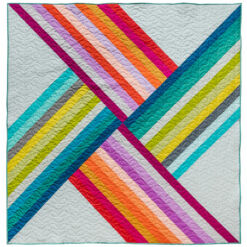
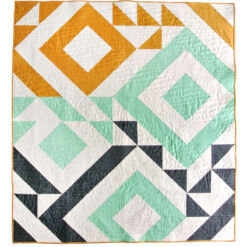
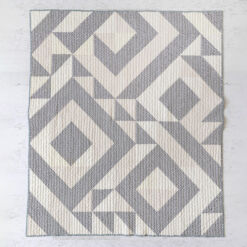
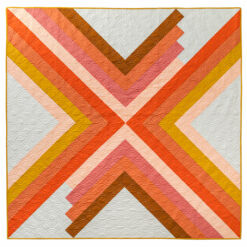
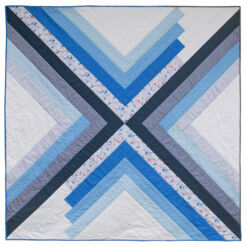
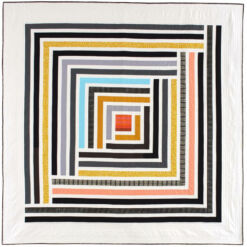
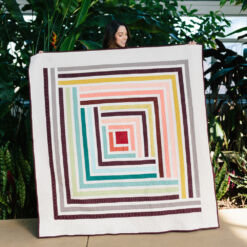
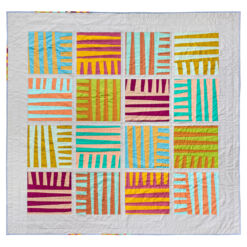
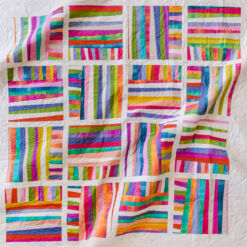
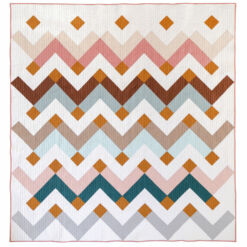
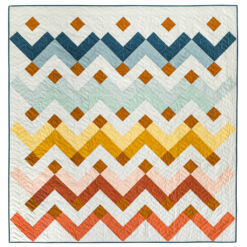
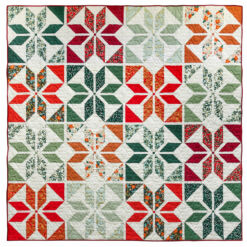
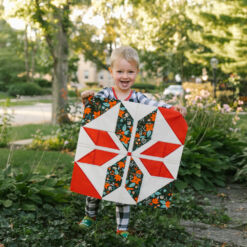
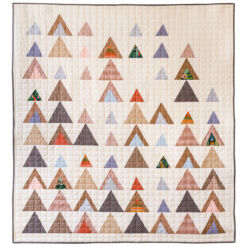
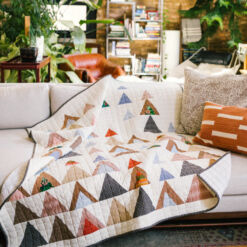
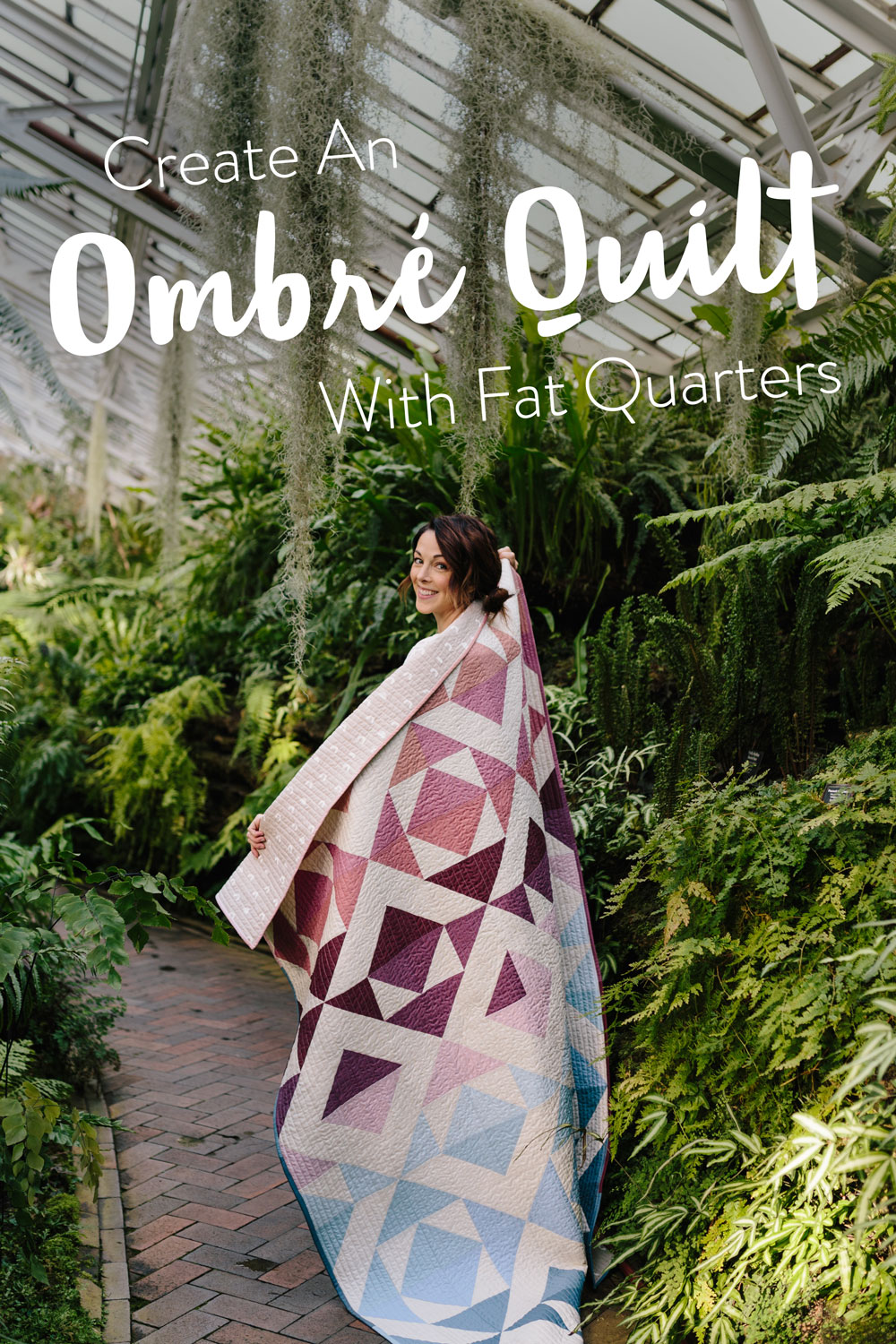
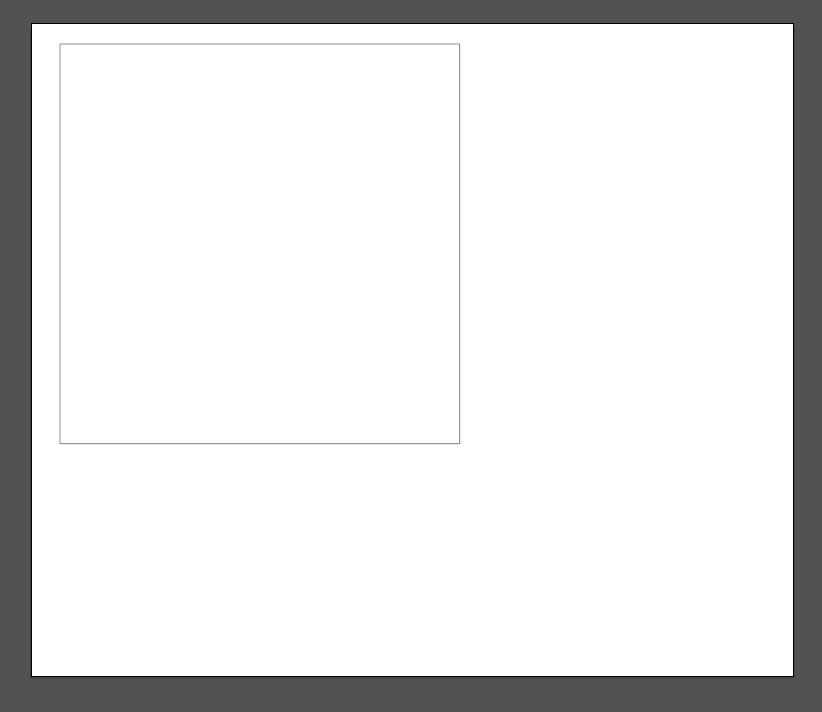
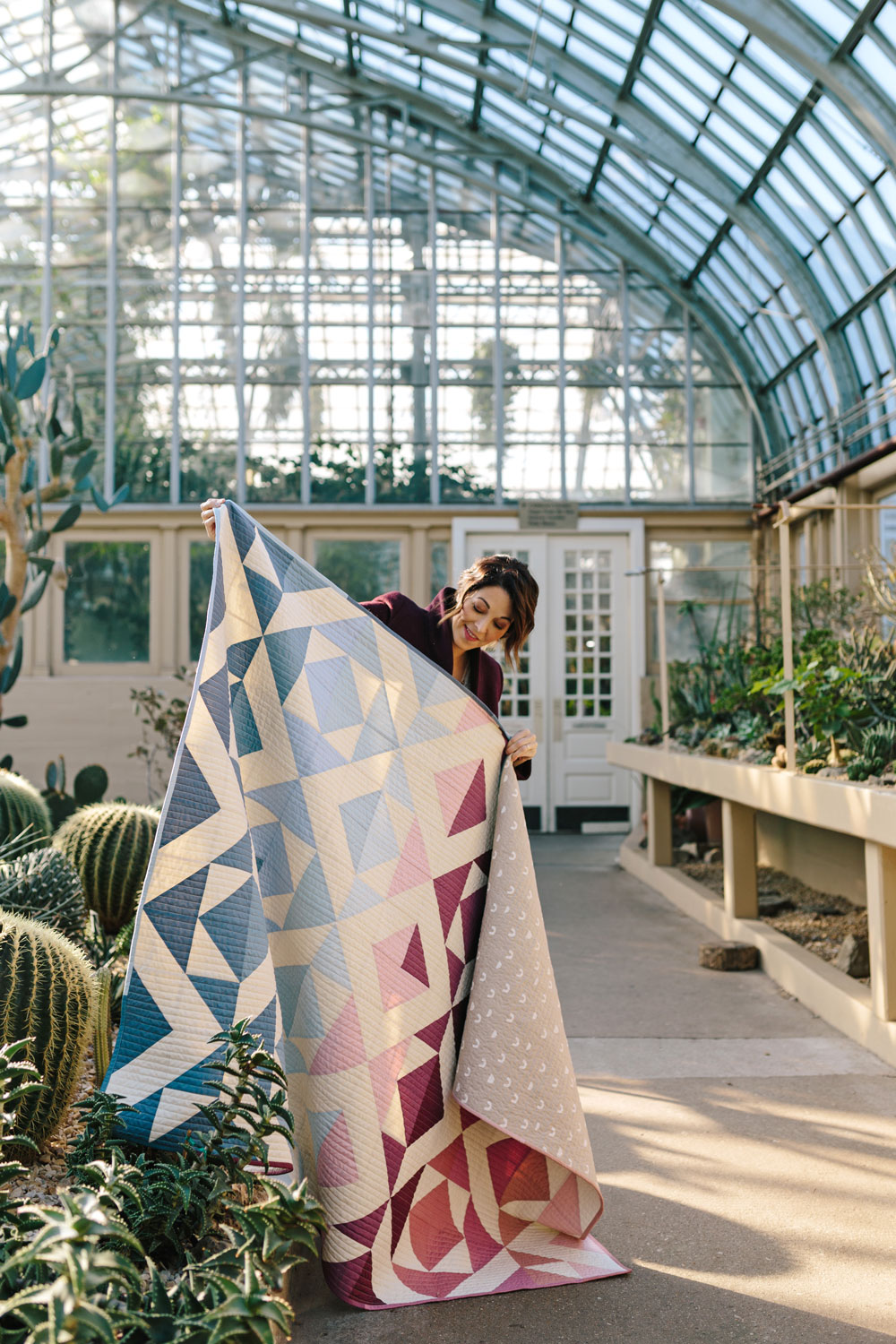
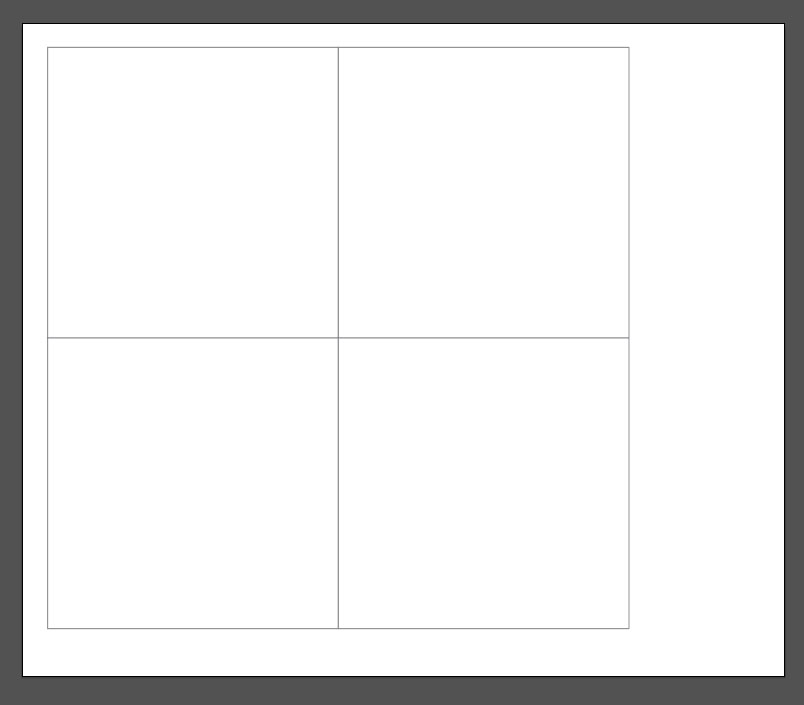

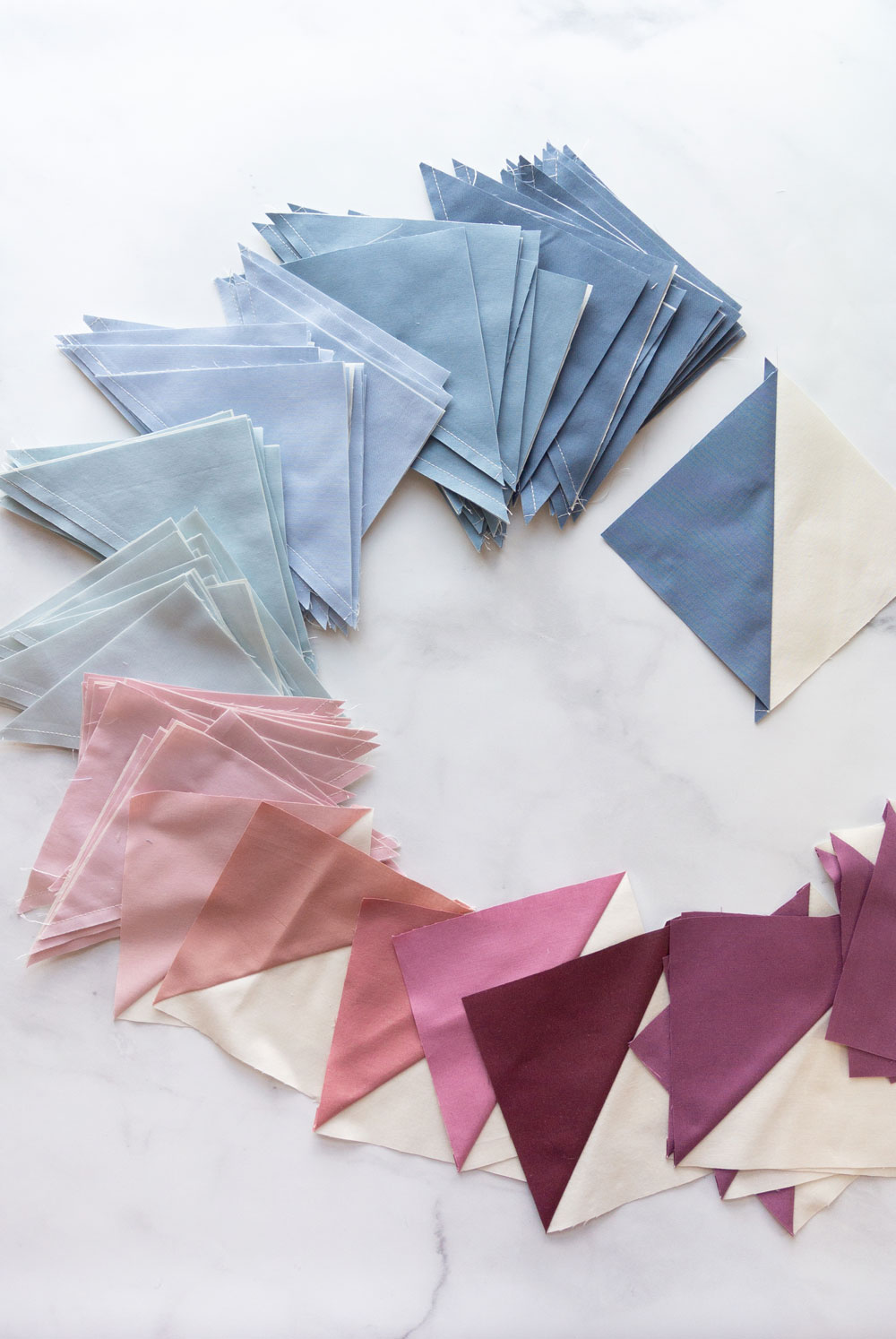
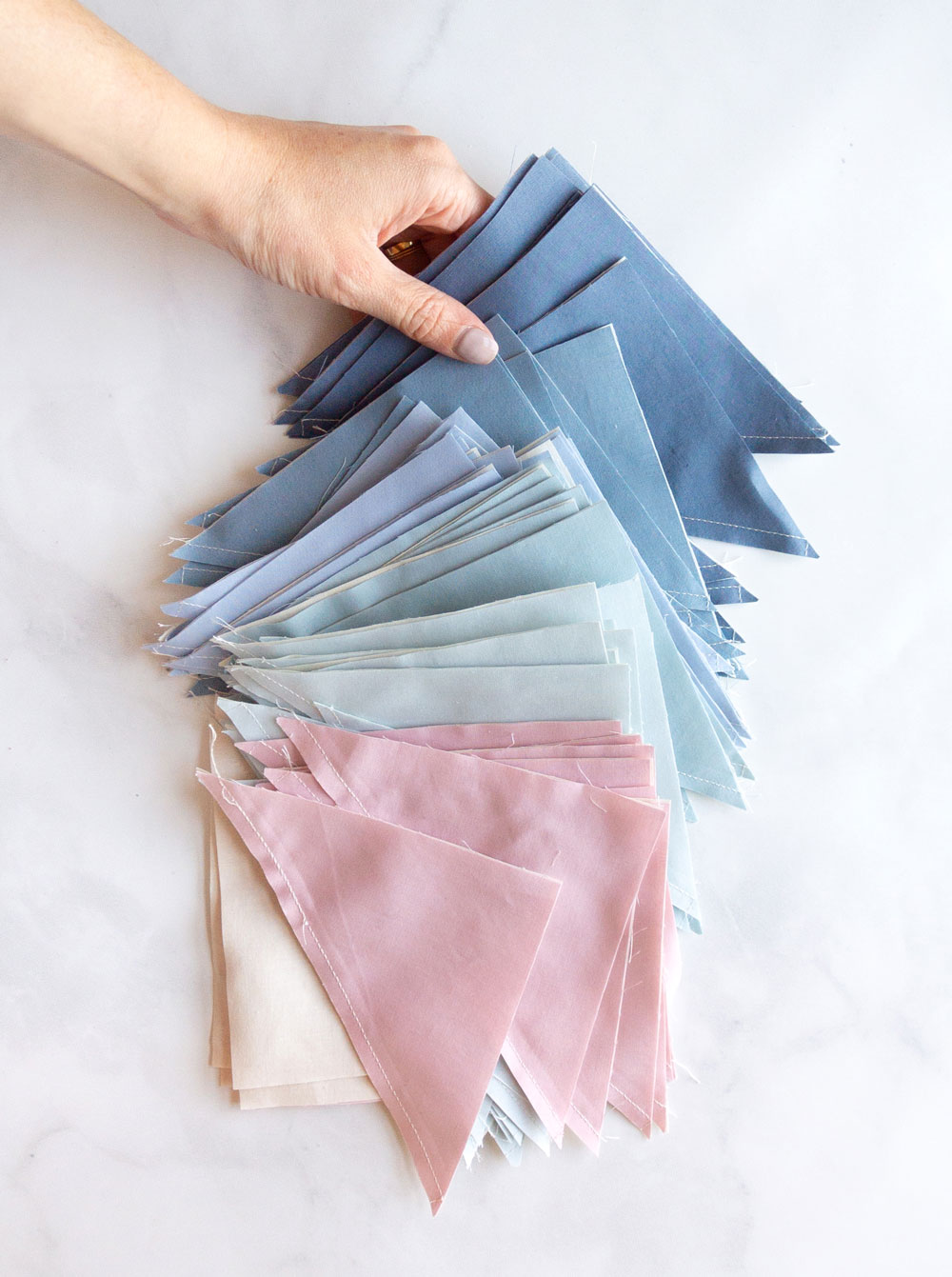
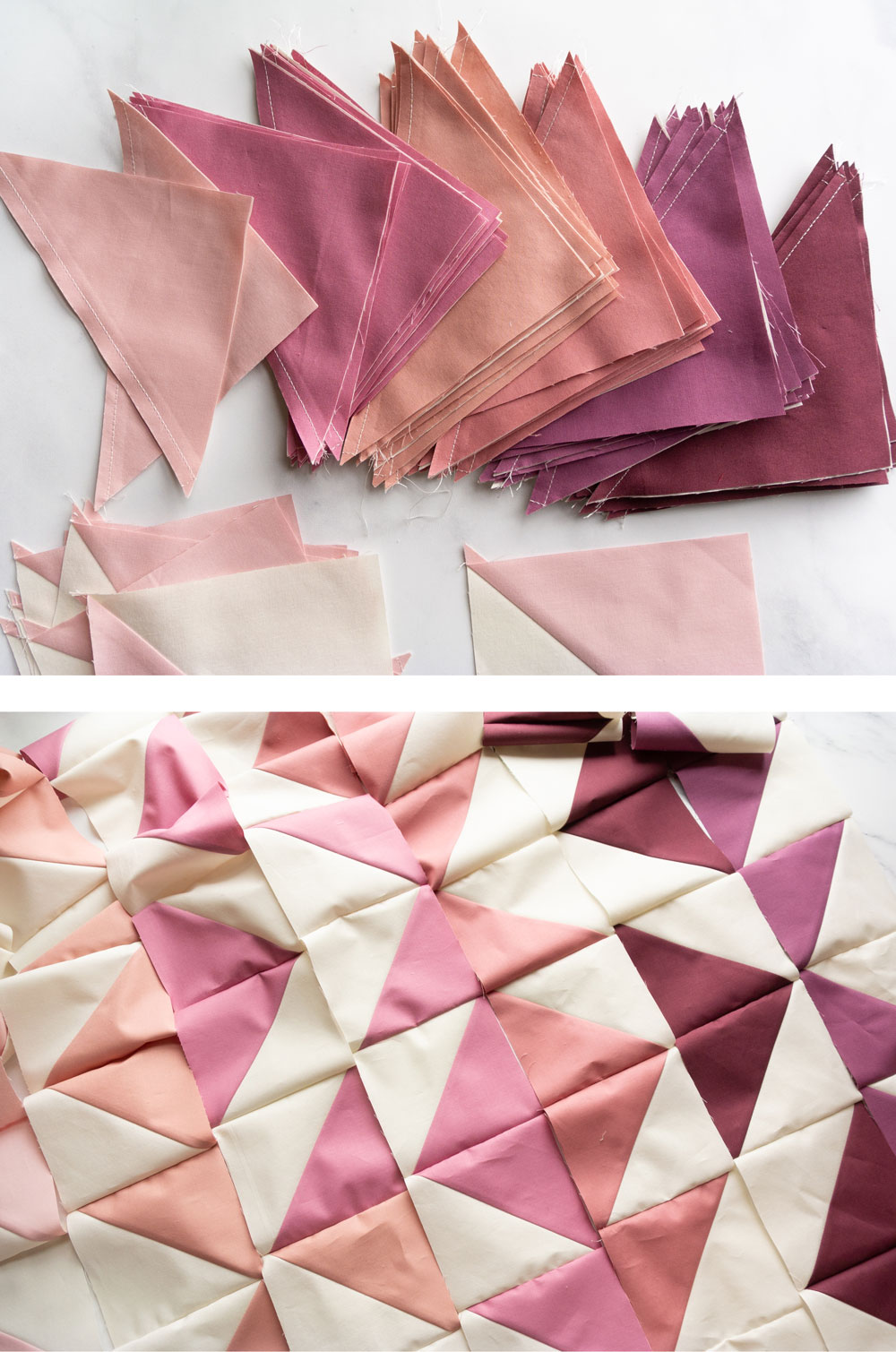
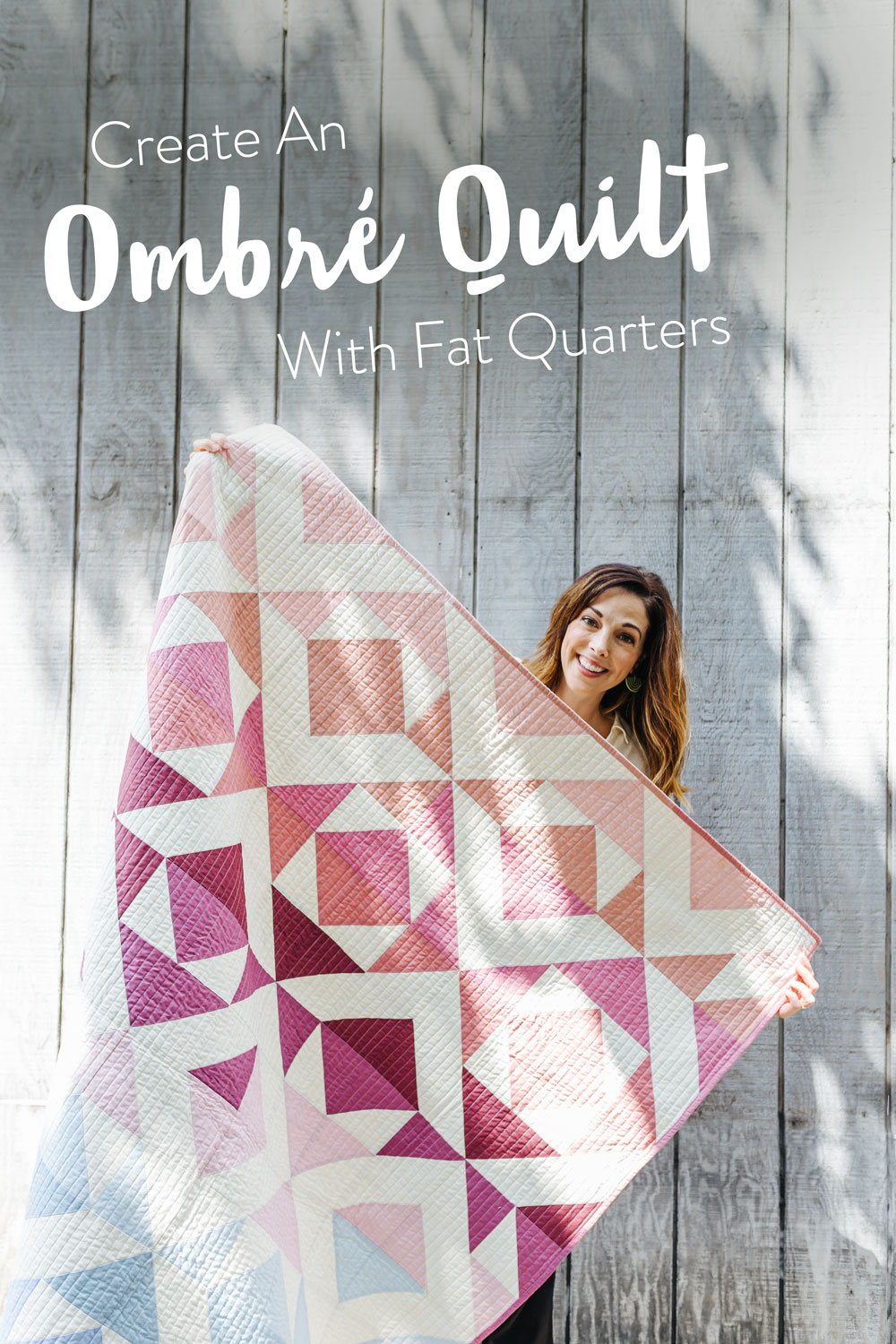
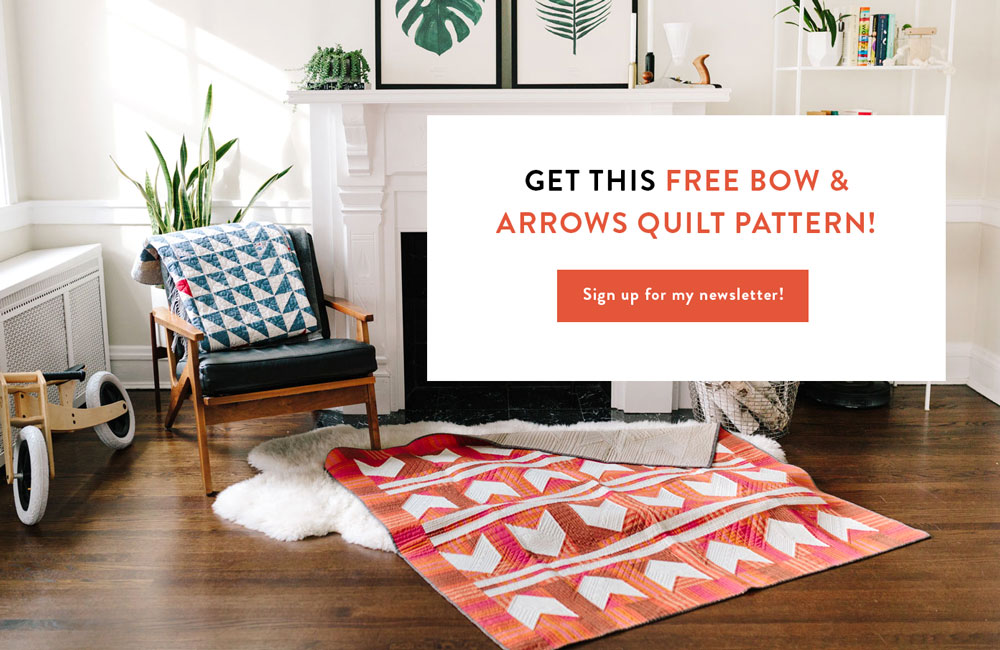
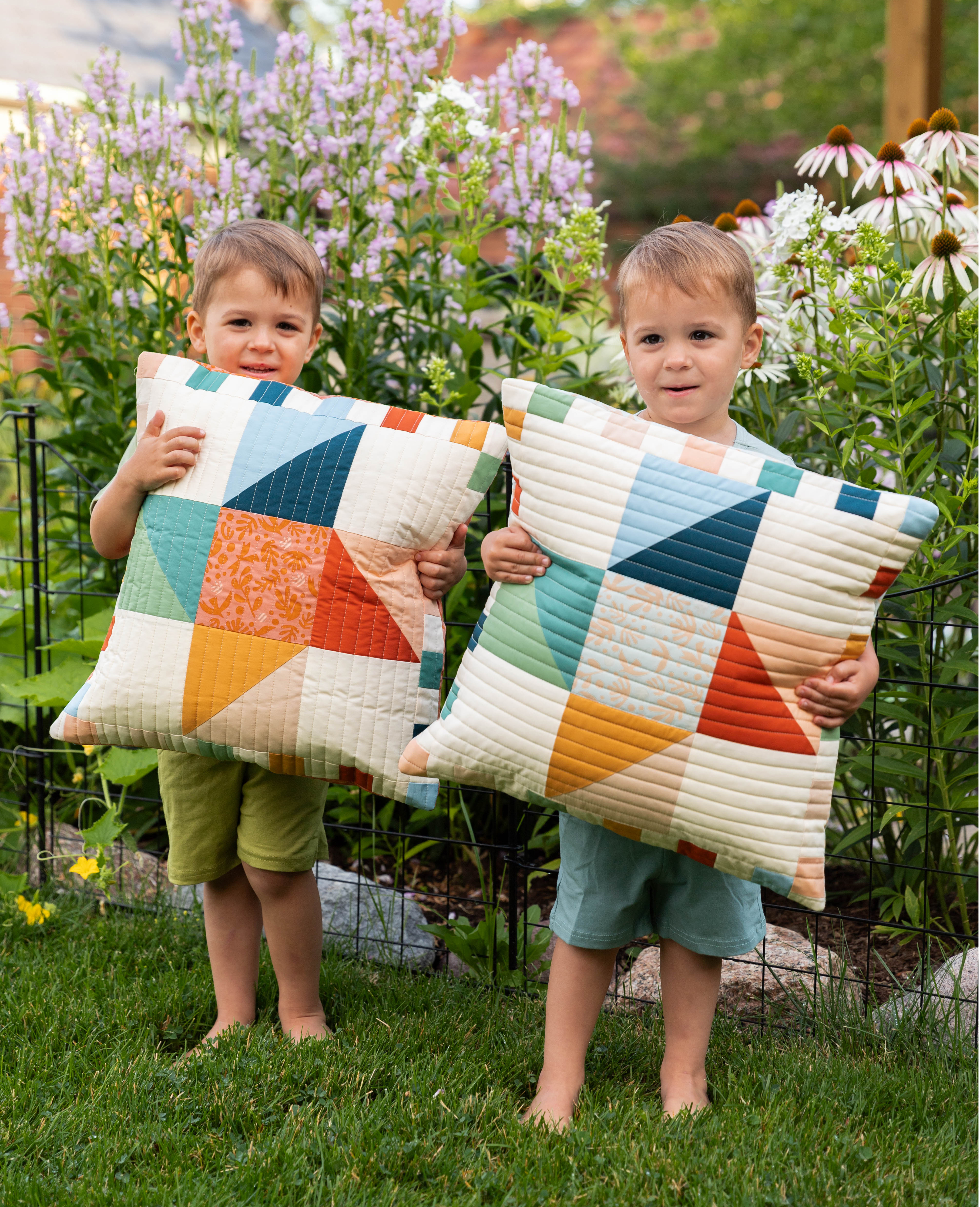

Beautiful! Was the shooting location Garfield Park Conservatory?
It sure was!
I knew the location of the photo shoot looked very familiar. Love the Garfield Park Conservatory!! Great article, great pics!
From a Fellow NWIIndiana/Illinois resident. Love your patterns!!
Yes! It’s such a beautiful place. I find myself there at least once a month!
Beautiful! I love your colour selection. Very modern
Was there enough fabric left to piece together the binding?
Unfortunately there was only enough for about 3/4 of the binding, so I still needed to substitute in a little bit extra. Technically, you could just get another fat quarter, however, a longer cut of fabric, like 1/4 yd., would make life easier.
This post is all about being an ombre quilt. But could it also be done as a rainbow?
PS. Your quilt is phenomenal and I love all your posts!
TOTALLY! You could create any color scheme you like. Fat quarters are very fun and flexible like that. 🙂
Did you use all 13 colors (1 per row)? I am wanting to increase the size to a Queen. How much of each color did you use per row? Thank you,
Tracey
To increase from a throw to a queen you will loosely need to quadruple the throw. Since the throw is 54″ x 72″ and a queen is roughly 90″ x 110″.
So to increase from this throw to a twin you would need to double it? I’m thinking then of getting a half yard of each fabric instead of the quarter yard… right?So excited to try this out!
A standard twin is 70″ x 90″ and this throw is 54″ x 72″, so you don’t need to double it, just enlarge it by about 40%. To do that, multiple the unfinished HST size by 1.4. I believe for the throw they are 5″, so for the twin size, make your HSTs 7″ unfinished. (5 x 1.4 = 7) This HST conversion blog post will show you three different ways you can make HSTs that size – https://suzyquilts.com/half-square-triangles-tutorial/
So for a baby I would need ? FQ and how many 8′ squares?????
The number of squares to cut would remain the same, however the size of those squares would be smaller. This quilt pattern scales up and down for each new size. If you check out the PDF pattern you can see what the baby quilt requires for square size. (Hint: it’s really close to 8″, so fat quarters would be perfect for making the baby size.)
Thank you for the tips!!!!!
Beautiful!
Beautiful! Love how you converted this to ombre. The MM Cotton Couture fabrics are my fav for solids!! (And I have wonderful memories of where you did your photo shoot. I hope we go back this winter again! I wanted to live there all winter!) ♥
Thanks for this idea! I love the design and will be sharing your link in my newsletter.
Suzy!!! I just made an ombre triangle jitters and was stumped as to backing fabric. I thought I’d check what you used and I love it! Are you able to tell me what fabric this is that you used for backing??
Thank you! This fabric is by Alison Glass and it’s Chroma in Turquoise.
I LOVE this quilt! It is definitely on my project list. I ran across this amazing way to get eight 8inch HST from a fat quarter. It’s a YouTube tutorial from SewVeryEasy. I am not affiliated with her or her channel but thought this might make cutting your HST easier.
https://www.youtube.com/watch?v=L2VChFobreo
do you sell a pattern for this quilt?
I sure do! https://suzyquilts.com/shop/nordic-triangles-quilt-pattern-download/
Suzy,
Although I’m new to quilting, I’ve been sewing for years. It is your blog that has inspired me to start! Thank you for that! I’m making the ombre Nordic Triangles quilt, but for a Queen. Should I use the same size squares as the throw and increase the number of columns for added width?
Thanks, Jennifer! I think you should increase the size of the HSTs. You should be able to do that in the chart in the pattern, or from this blog post – https://suzyquilts.com/half-square-triangles-tutorial/
Such a beautiful quilt! I recently watched one of your videos on hand quilting and gave it a try! It’s my new favorite!! Can you share the backing fabric on this quilt? It’s lovely!
Thank you! It’s called Cups Natural in the Moonrise collection by Alexia Abegg for Cotton + Steel.
I have decided to use the same color way you used in your ombre quilt and wondered if you had a photo or chart of the entire quilt laid out flat. I am very visual and it would help greatly.
Of course! If you look above in the Section My Ombre Quilt Fabrics I list out everything I use.
I would like to make this as a quilt for a queen sized bed. How would I adjust the fabric requirements?
Thanks,
I bought the pattern and I’m wanting to make a queen size. Using the HST shortcut chart I can’t figure out which size to use for the queen?
Thank you for this tutorial. My future daughter in law has requested a quilt that is supposed look like the Epcot Center surface; the pattern is called Spaceship Planet Earth. I believe it would look better as an ombre quilt but am not sure how to tackle it. While your tutorial will help, I would also appreciate any ideas or suggestions! I wish I could post pictures to show you the pattern and an idea I found for a gradiation of it, but the images are here: quilt pattern: https://www.pinterest.com/pin/823806956828749119/
Gradiated version: https://i.pinimg.com/originals/91/71/e5/9171e573f485ac1729b1b8956d8ec25e.jpg
Thanks for your thoughts!
Could you show a picture of the quilt flat? I’m half way through this quilt and it’s very hard to work off your pattern from the pictures of you holding the quilt at those angles.
Hi Carrie, we’re so glad you like the ombré version of Nordic Triangles! We do not have a flat shot of this quilt, but the great thing is this tutorial is designed for you to add your own creative flair to the pattern! You can put your HSTs in any order you’d like to create your own unique ombré. We hope you have fun experimenting with your HST placement!
What color thread did you use for quilting? One color for the whole quilt?
I matched my thread to the background fabric. And yes, just one color.
Hi there, this quilt is so beautiful I have decided to make it for my mother for Christmas. She is an avid quilter, and just helped me make my very first quilt. That quilt involved a lot of HST’s, so when I saw this pattern, I thought it would be accessible for me. However, I’ve realized after purchasing the pattern, that I love it in the ombré, but do not know how to make it off the pattern. I’m not sure how to start cutting since the pattern just uses 4 colors, and I’ll be using 13. Any tips? I’m lost!
You’ll cut 50 8″ squares and use the 4-at-a-time HST method 🙂 That’s four squares per fat quarter, which is the diagram in Step 3. You’ll have some HSTs left over, so you can decide how many of each color you want to use in your quilt after you’ve made the HSTs and laid them out!
Hi! I want to make an ombré Nordic triangle quilt just like the one above. Can I order the 13 pink and blue and cream fabrics from you? If not where can I get those exact fabrics?
Hi Janet! Here at Suzy Quilts, we do not sell fabric. But if you scroll down in this post to the header that says “My Ombré Quilt Fabrics,” you’ll see the names of the Michael Miller solid fabrics used to make this quilt and links to where you can buy your own!
I am trying to gather the fabrics you mention for the beautiful Ombré quilt
I can not find the current andd the sea , would you please help me find other fabrics that would work?
Thank you
Hi Deborah, it looks like Currant is still available using the link in the blog post. Yay!
https://www.hawthornesupplyco.com/cotton-couture-fabric-collection-by-michael-miller-house-designer/cotton-couture-in-currant/41DCD0AECFC7/
As far as sea, do you have color cards? These would be helpful to match the colors. You can also reach out to a fabric shop that has the Michael Miller Cotton Couture collection and can help you to find the perfect color. Best of luck! 🙂